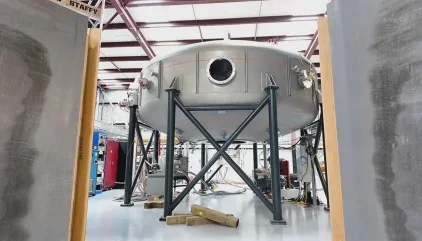
Wellington-based OpenStar Technologies has taken a step towards completing New Zealand’s first fusion energy device prototype. The company, established in 2021, has powered its core component – a half-tonne doughnut-shaped magnet named Junior – using a patented key-enabling technology called the flux pump.
Junior houses a unique, complex arrangement of superconducting systems. When operational, it floats suspended inside a vacuum chamber – a “levitated dipole”. This method enabled by the flux pump addresses the core challenge of fusion – heating plasma to well over 100 million degrees Celsius. Since no physical material can withstand contact with such temperatures, the plasma is suspended in a vacuum, confined by a magnetic field, while fusion occurs. In current fusion machines, plasma is contained inside the superconducting magnets by the magnetic field they produce.
OpenStar said charging Junior using the flux pump enables it to operate while floating freely without any external power supplies connected to the device, reinforcing the simplicity and strength of the dipole configuration. Superconductors are housed within Junior, and the magnetic field lines emanate outwards in a dipole shape, confining the plasma around the magnet.
“Besides the physics advantage of pulling instead of pushing on the unstable plasma, the inversion of the magnet on the inside of the plasma has the benefit of having a smaller, replaceable, high-tech core magnet with high utilisation compared to tokamaks and similar devices,” said OpenStar Director of Plasma Science Darren Garnier.
“This is the first global, commercial, use of a unique superconducting power supply (flux pump) in a high-field fusion class magnet,” said Rod Badcock of the Robinson Research Institute at Victoria University of Wellington. “This NZ technology enables every following step all the way to first plasma for this fusion energy technology. It proves that the unique approach taken by OpenStar is viable.”
OpenStar Founder and CEO Ratu Mataira told Newshub: “One of the reasons why it’s safe is related to the reason it’s so hard. We have to get this plasma insanely hot to do anything. It’s a very small amount of something at very high temperatures… basically if anything goes wrong, it just cools down immediately.” OpenStar aims to have commercial fusion power on our grid by the 2030s.






